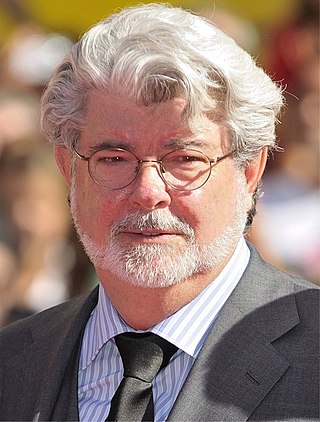
George Walton Lucas Jr. is an American filmmaker and philanthropist. Lucas is best known for creating the Star Wars and Indiana Jones franchises and founding Lucasfilm, LucasArts, Industrial Light & Magic and THX. He served as chairman of Lucasfilm, before selling it to The Walt Disney Company in 2012. Lucas is one of history's most financially successful filmmakers and has been nominated for four Academy Awards. Lucas personally directed or conceived ten of the 100 highest-grossing movies at the North American box office, adjusted for ticket-price inflation. Lucas is considered to be one of the most significant figures of the 20th-century New Hollywood movement, and a pioneer of the modern blockbuster. Despite this, he has remained an independent filmmaker away from Hollywood for most of his career.

Return of the Jedi is a 1983 American epic space opera film that is the sequel to Star Wars (1977) and The Empire Strikes Back (1980). It is the third installment in the original Star Wars trilogy and the sixth chronological film in the "Skywalker Saga". It is directed by Richard Marquand based on a screenplay by Lawrence Kasdan and George Lucas from a story by Lucas, who was also the executive producer. The film follows the ongoing struggle between the malevolent Galactic Empire and the freedom fighters of the Rebel Alliance. As the Rebels attempt to destroy the Empire's second Death Star, Luke Skywalker hopes to bring his father, Darth Vader, back from the dark side of the Force. The film stars Mark Hamill, Harrison Ford, Carrie Fisher, Billy Dee Williams, Anthony Daniels, David Prowse, Kenny Baker, Peter Mayhew and Frank Oz.

The Empire Strikes Back is a 1980 American epic space opera film directed by Irvin Kershner from a screenplay by Leigh Brackett and Lawrence Kasdan, based on a story by George Lucas. The sequel to Star Wars (1977), it is the second film in the Star Wars film series and the fifth chronological chapter of the "Skywalker Saga". Set three years after the events of Star Wars, the film recounts the battle between the malevolent Galactic Empire, led by the Emperor, and the Rebel Alliance, led by Princess Leia. Rebel ally Luke Skywalker trains to master the Force so he can confront the Emperor's powerful disciple, Darth Vader. The ensemble cast includes Mark Hamill, Harrison Ford, Carrie Fisher, Billy Dee Williams, Anthony Daniels, David Prowse, Kenny Baker, Peter Mayhew, and Frank Oz.
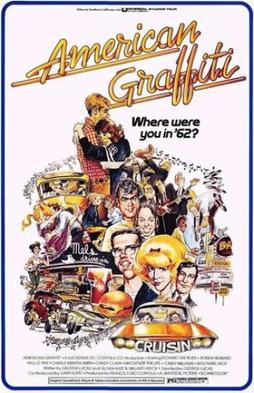
American Graffiti is a 1973 American coming-of-age comedy-drama film directed by George Lucas, produced by Francis Ford Coppola, written by Willard Huyck, Gloria Katz and Lucas, and starring Richard Dreyfuss, Ron Howard, Paul Le Mat, Harrison Ford, Charles Martin Smith, Cindy Williams, Candy Clark, Mackenzie Phillips, Bo Hopkins, and Wolfman Jack. Set in Modesto, California, in 1962, the film is a study of the cruising and early rock 'n' roll cultures popular among Lucas's age group at that time. Through a series of vignettes, it tells the story of a group of teenagers and their adventures over the course of a night.

Robert Weston Smith, known as Wolfman Jack, was an American disc jockey active for over three decades. Famous for the gravelly voice which he credited for his success, saying, "It's kept meat and potatoes on the table for years for Wolfman and Wolfwoman. A couple of shots of whiskey helps it. I've got that nice raspy sound."
The Daily Bugle is a fictional New York City tabloid newspaper appearing as a plot element in American comic books published by Marvel Comics. The Daily Bugle is a regular fixture in the Marvel Universe, most prominently in Spider-Man comic titles and their derivative media. The newspaper first appeared in the Human Torch story in Marvel Mystery Comics #18. It returned in Fantastic Four #2, and its offices were first depicted in The Amazing Spider-Man #1.
Paul Le Mat is an American actor. He first came to prominence with his role in American Graffiti (1973); his performance was met with critical acclaim and earned him the Golden Globe Award for New Star of the Year - Actor.

41 Original Hits from the Soundtrack of American Graffiti is the official 1973 soundtrack album of the film American Graffiti. It has been certified triple platinum in the U.S., where it peaked at #10 on the Billboard 200 album chart.
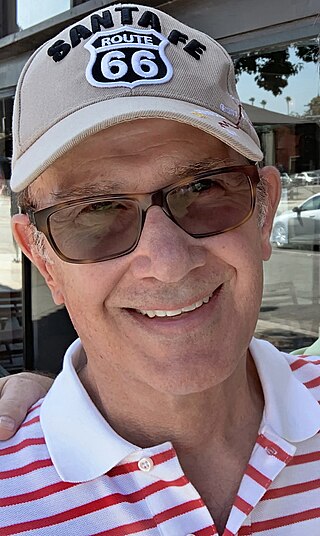
Howard G. Kazanjian is an Armenian-American film producer best known for the Star Wars films The Empire Strikes Back and Return of the Jedi, as well as the Indiana Jones movie Raiders of the Lost Ark. Kazanjian was an originating member of Lucasfilm, Ltd., serving as its vice president for approximately eight years.
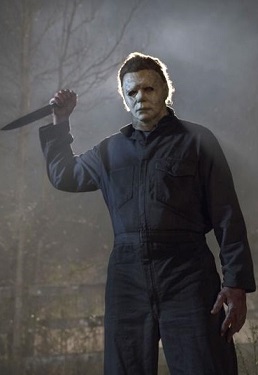
Michael Myers is a character from the slasher film series Halloween. He first appears in John Carpenter's Halloween (1978) as a young boy who murders his elder sister, Judith Myers. Fifteen years later, he returns home to Haddonfield, Illinois, to murder more teenagers. In the original Halloween, the adult Michael Myers, referred to as The Shape in the closing credits, was portrayed by Nick Castle for most of the film and substituted by Tony Moran in the final scene where Michael's face is revealed. The character was created by John Carpenter and has been featured in twelve films, as well as novels, video games, and comic books.

Cynthia Jane Williams was an American actress and producer. She is best known for her role as Shirley Feeney on the television sitcoms Happy Days (1975–1979), and Laverne & Shirley (1976–1982). She also appeared in American Graffiti (1973), The Conversation (1974), Mr. Ricco (1975), and More American Graffiti (1979).
The original Star Wars trilogy, formerly marketed as the Star Wars Trilogy, is the first set of three films produced in the Star Wars franchise, an American space opera created by George Lucas. It was produced by Lucasfilm and distributed by 20th Century Fox, and consists of Star Wars (1977), The Empire Strikes Back (1980) and Return of the Jedi (1983). Beginning in medias res, the original trilogy serves as the second act of the nine-episode Skywalker Saga. It was followed by a prequel trilogy between 1999 and 2005, and a sequel trilogy between 2015 and 2019. Collectively, they are referred to as the "Skywalker Saga" to distinguish them from spin-off films set within the same universe.
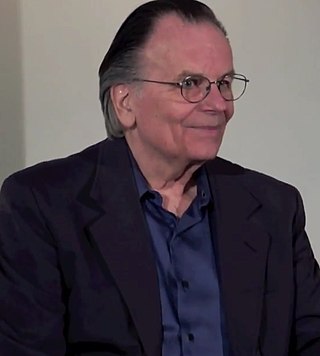
Gary Douglas Kurtz was an American film producer whose list of credits includes American Graffiti (1973), Star Wars (1977), The Empire Strikes Back (1980), The Dark Crystal (1982) and Return to Oz (1985). Kurtz also co-produced the 1989 science fiction adventure film Slipstream, which reunited him with Star Wars star Mark Hamill.

Andy Sugden is a fictional character from the British ITV soap opera, Emmerdale, played by Kelvin Fletcher. He made his first on-screen appearance on 4 July 1996. Andy is the son of Billy Hopwood and Trisha Hopwood and the adoptive son of Jack Sugden and Sarah Sugden.

Laurie Strode is a character from the Halloween series. She first appeared in Halloween (1978) as a high school student who becomes targeted by serial killer Michael Myers, in which she was portrayed by Jamie Lee Curtis. Created by John Carpenter and Debra Hill, Laurie appeared in nine of thirteen films in the series. The character has subsequently been represented in various other media, including novels, video games, and comic books.
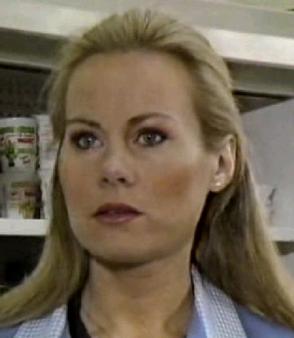
Debbie "Debs" Wilkins is a fictional character from the BBC soap opera EastEnders, played by Shirley Cheriton, from 21 March 1985 to 14 May 1987. Debbie is Walford's first upwardly mobile character. She has an on/off relationship with her ill-fated boyfriend Andy O'Brien and she tends to be a bit too pretentious for the working class locals of Albert Square.

Marcia Lou Lucas is an American film editor. She is best known for her work editing the Star Wars trilogy (1977–1983) as well as other films by her then-husband George Lucas: THX-1138 (1971) and American Graffiti (1973). She also edited Martin Scorsese's Alice Doesn't Live Here Anymore (1974), Taxi Driver (1976), and New York, New York (1977).

Halloween II is a 2009 American slasher film written, directed, and produced by Rob Zombie. The film is a sequel to Zombie's 2007 remake of 1978's Halloween and the tenth installment in the Halloween franchise. The story follows Laurie Strode as she deals with the aftermath of the previous film's events, Dr. Loomis who is trying to capitalize on those events with a new book, and Michael Myers as he seeks to reunite with his sister. The film sees the return of lead cast members from the 2007 film Malcolm McDowell as Loomis, Scout Taylor-Compton as Strode, and Tyler Mane as Myers, respectively. Sheri Moon Zombie, Brad Douriff, and Danielle Harris also return from its predecessor.
The Dirty Dozen is the nickname for a group of filmmaking students at the USC School of Cinematic Arts within the University of Southern California during the mid-late 1960s. The main group consisted of budding directors, screenwriters, producers, editors, and cinematographers. Through innovative techniques and effects, they ended up achieving great success in the Hollywood film industry.

Jungle Street, released in the US as Jungle Street Girls, is a 1961 black and white second feature British crime drama directed by Charles Saunders and starring David McCallum, Kenneth Cope, and Jill Ireland. A young man attempts to escape his working-class background and win the girl he loves through crime.
















